- europages
- >
- Sensors
- >
- TWK-ELEKTRONIK GMBH
- >
- products
TWK-ELEKTRONIK GMBH
Germany
Manufacturer/ Producer


TWK-ELEKTRONIK GMBH
Germany
Please note that this product is an accessory. In the "Products" section you will find the corresponding encoders that you can order for your selected article. The linear movement of a flexible steel cable, which can have a length of up to 3 m, is converted into an rotary movement with the aid of a measuring drum. The measuring drum is connected to the shaft of an encoder. In this way a change in displacement of the measuring cable causes the shaft of the encoder to rotate by a directly proportional amount which can be recorded. The restoring force of the spring drive holds the measuring cable tight at all times and prevents any sagging which would otherwise induce an error. The cable is wound up precisely and reproducibly wrap for wrap in the helical groove of the drum. The nozzle, through which the cable enters the drum, is protected with a brush and a bellow to prevent water or dust entering the drum.
Request for a quote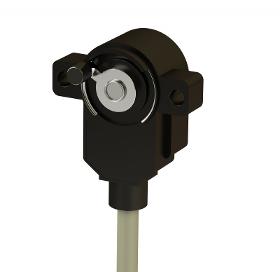
TWK-ELEKTRONIK GMBH
Germany
Impact-resistant, sealed plastic housing, resistant to splash water, fuels, motor oils and antifreeze - Actuation via angled metal lever - Return spring fitted - Resistance element made of conductive plastic - Multiple contact grinder made of precious metal - Resistance for current limitation fitted in the grinder circuit - Fastening via two side round holes - Electrical connections via side cable outlet with AMP plug.
Request for a quote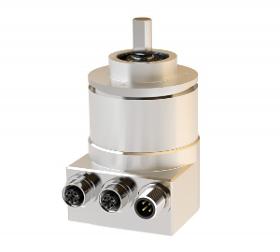
TWK-ELEKTRONIK GMBH
Germany
Recording of the angular position and revolutions by means of Hall sensors - multiturn version with absolute multiturn transmission for up to 4096 revolutions - data output plus parameterisation and diagnosis via PROFINET. Robust housing manufactured from seawater-resistant aluminium or stainless steel - stainless steel shaft - ball bearing with radial shaft seal-sensor circuit consisting of ASIC with Hall elements - electrical connection via M12 connector or cable outlet. The Profinet interface according to IEC 61158 / 61784 or PNO specifications order No. 2.712 and 2.722, version 2.2, is integrated into the model series TRT absolute encoders. Real time classes 1 - 3 are supported, i.e. Real Time (RT) and Isochronous Real Time (IRT) plus the requirements of conformance class C. Setting the address, baud rate or terminating resistances is not necessary. A name, which is stored in the absolute encoder's non-volatile memory, is assigned via the PROFINET controller to address the device.
Request for a quote
TWK-ELEKTRONIK GMBH
Germany
Robust case either in seawater resistant aluminum or in stainless steel - shaft in stainless steel - rotating components with permanent magnet in front chamber - electronic circuit with ASiC and Hall elements and interface components fitted within main chamber, separated from rotating components by a metallic wall - optional potting against water jets (IP 69K) - electrical connections via cable leads with inspection plug.
Request for a quote
TWK-ELEKTRONIK GMBH
Germany
The linear transducers operate according to the differential throttle principle (inductive half-bridges). They consist of two coils which are impermeably cast into a Mu-metal cylinder, where they are protected from vibrations. On displacement through the hollow coil body, a Mu-metal plunger leads to a change in the induction direction in both coils. The linear transducers are designed for an oscillator frequency of 10 kHz. The supply and signal processing are carried out by external modules.
Request for a quote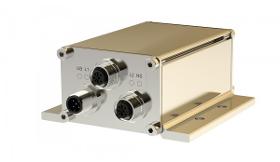
TWK-ELEKTRONIK GMBH
Germany
Registration of inclination in the gravitational field by means of MEMS sensors (Micro-Electro-Mechanical-System) with subsequent digitisation and linearisation via controllers. MEMS sensors are integrated circuits manufactured using silicon bulk micromechanical technology. Double capacities are formed with the aid of moveable micromechanical structures. If these structures are deflected in the case of acceleration, e.g. gravitational acceleration (g), this results in capacity changes, which are registered and further processed using measuring technology. The output voltage follows the function U ~ g * sin α. In this case, the angle α is the sensor's inclination angle measured against the g-vector. These sensors measure precisely, have a long service life and are very robust. The measuring axes operate independently of each other.
Request for a quote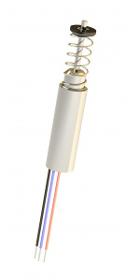
TWK-ELEKTRONIK GMBH
Germany
The displacement transducers operate according to the principle of the differential choke, i.e. an inductive half bridge. They consist of two coils which are encapsulated in a stainless steel cylinder ensuring positive protection against vibration, shock, humidity, oil and corrosive matter. A mu-metal plunger core causes opposing changes of inductance when it is displaced through the centre of the coils. The displacement transducers are designed for a carrier frequency of 10 kHz. Other frequencies can be used but may involve changes of output values.
Request for a quote
TWK-ELEKTRONIK GMBH
Germany
The displacement transducers operate according to the principle of run time measurement between two points of a magnetostrictive waveguide. One point is determined by a moveable position magnet, whose distance from the null point corresponds to the section to be measured. The run time of an emitted impulse is directly proportionate to this section. Conversion to an analogue measuring signal takes place in the downstream electronics. The waveguide is housed in a pressure-resistant stainless steel tube or extruded profile. To the rear of this is a die-cast aluminium housing containing the electronics in SMD technology. Electrical connection is implemented via a circular connector. In the rod version, the position magnet is located in a ring, which is guided over the rod without contact. In the profile version, it is located either in a slider, which is linked to the moving part of the machine via a ball joint, or it moves as a liftable position magnet, without wear, over the profile.
Request for a quote
TWK-ELEKTRONIK GMBH
Germany
The linear transducer model PWA measures the absolute position of the plunger without contact or wear using an inductive resonator measuring system. This consists of an excitation coil which causes an oscillating resonance circuit (moving target) fastened to the plunger to oscillate. This in turn excites the receiver coils fixed in the housing, which are printed on a printed circuit board. The integrated electronics transform these signals (sin/cos) into a signal proportionate to the linear travel. The measuring system is insensitive to electrical and magnetic fields. 0(4) to 20 mA and 0 to 10 VDC are available as standard as analogue signal outputs. CANopen, IO link and SSI are in preparation. The sensor is fastened using at least two retaining clips HK-01 or using sliding blocks ST-01. The sensor can be equipped with ball joints at the front and rear. Alternatively, the sensor's plunger can be designed as a button.
Request for a quote
TWK-ELEKTRONIK GMBH
Germany
Registration of inclination in the gravitation field using MEMS sensors (Micro-Electro-Mechanical-System) with subsequent digitisation and linearisation via a controller. Data output is carried out via the CANopen interface or as an analogue signal. The inclination sensor has a stable aluminium housing (optionally stainless steel). Slots are available for mechanical alignment (up to approx. ± 7.5°). In the case of CANopen, one connector or one male/female connector combination can be selected optionally for connection purposes. Casting measures in the housing lead to the achievement of protection class IP 69K, e.g. for use under water.
Request for a quoteManufacturer/ Producer
Bismarckstraße 108
40210 Düsseldorf - Germany
europages also recommends
A selection of companies related to the activity:
A selection of products that might interest you
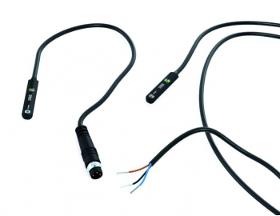
RIEGLER & CO.KG
Germany
The cylinders described here are pneumatic drive units mainly for linear movement. The piston rods or the magnetic traction transfer the movement of the piston to the components to be moved. We offer round, short-stroke, compact, profiled barrel cylinders and piston rod-free drives. In addition you will find here a whole range of sensors, fastening parts and accessories. Our piston rod cylinders are fabricated according to various ISO standards and are available in single-acting or double-acting design. They are suitable for filtered, unoiled or oiled compressed air.
Request for a quote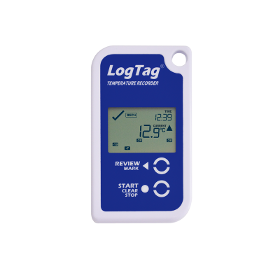
PRAXAS B.V.
Netherlands
The Logtag Logtag TRED30-16R Temperature Logger with external sensor is specifically for monitoring temperature during transport and storage. The data logger has a capacity of up to 15,900 measurements and a measuring range of -40°C to +99°C from an external sensor.
Request for a quote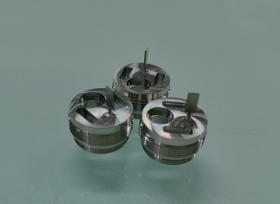
SHENZHEN PROMOSTAR HARDWARE CO.,LTD
Germany
CNC turn-milling compound machining flange
Request for a quote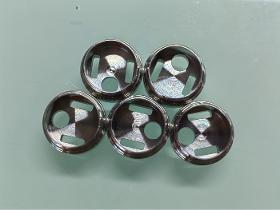
SHENZHEN PROMOSTAR HARDWARE CO.,LTD
Germany
Stainless steel processing in Turning ,Milling.
Request for a quoteRequest for quotes
Create one request and get multiple quotes form verified suppliers.
- Only relevant suppliers
- Data privacy compliant
- 100% free



